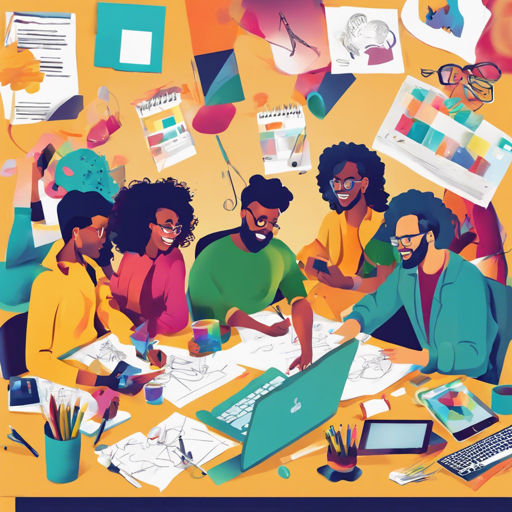Welcome to the delightful chaos of creating a “horrible” portfolio! Inspired by the spirit of community-driven development, this guide will help you join a unique project that’s all about fun and creativity. If you’re ready to dive in and make some ludicrous contributions, let’s get started!
Introduction to the Project
Have you ever wanted to create a portfolio that screams “Not taking myself seriously!”? This project is for you! It’s an open invitation to developers across the globe to contribute their wackiest ideas to an unconventional portfolio. The aim is to have fun while collaborating!
How to Make Your Contribution
Contributing to this portfolio is a journey rather than a destination. Follow these steps to ensure your pull requests are delightful and accepted!
Step 1: Understand Contribution Rules
Here’s what you should keep in mind:
- Don’t: Spam the repository with unnecessary changes. Minor styling or simple corrections are welcome, but blatant spam will be labeled invalid.
- Don’t: Use prettier auto-formatting as it can create significant merge conflicts.
- Don’t: Add build steps. This is a simple static site, so let’s keep it that way.
- Do: Keep your pull requests small to bamboozle the merge conflicts.
- Do: Ensure there’s no merge conflict before submitting.
- Do: Let your creativity shine! This project is designed for silliness—add easter eggs, pink themes, or whatever you desire!
Step 2: Create a Pull Request
Creating a pull request can be likened to submitting your artwork to a gallery. You want it to stand out but also fit in with the overall theme. The process involves:
- Forking the repository
- Cloning your fork locally
- Creating a new branch for your changes
- Committing your code
- Submitting the pull request for review
Understanding the Code: An Analogy
Imagine building a LEGO castle. Each piece represents a line of code, and when combined correctly, they create a magnificent structure. If you decide to add a giant pink dinosaur on the top instead of a flag, that works perfectly here, just make sure it doesn’t topple the whole thing! In programming, small changes can sometimes create big problems if they conflict. Just like in building LEGOs, you want to ensure that every piece fits together without causing chaos.
Troubleshooting Common Issues
As with any collaborative effort, issues may arise. Here are some troubleshooting tips to navigate challenges like a pro:
- Check for merge conflicts often: Don’t wait until you’ve made substantial changes. Conflicts can sneak up on you!
- If you’re unsure, check the contribution rules to ensure your changes align with the project’s vision.
- Don’t hesitate to ask questions! The community thrives on discussion.
- Errors with pull requests? Ensure that your local repository is in sync with the main repository. Consult the syncing forks documentation for help.
For more insights, updates, or to collaborate on AI development projects, stay connected with fxis.ai.
Get Informed: FAQs
- Who can contribute? Anyone with a GitHub account and a desire to join in the fun!
- What’s the goal of this project? To crowdsource a portfolio filled with unique, humorous contributions.
Final Thoughts
At fxis.ai, we believe that such advancements are crucial for the future of AI, as they enable more comprehensive and effective solutions. Our team is continually exploring new methodologies to push the envelope in artificial intelligence, ensuring that our clients benefit from the latest technological innovations.
Conclusion
Embrace the fun, let your creativity flow, and remember this is about laughing while collaborating. Can’t wait to see what ridiculous ideas you’ll bring to life in this delightful portfolio project!

